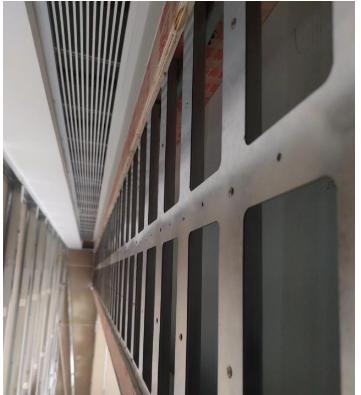The image display of LED uses an electronic light-emitting system to display the image conversion results of digital signals. The dedicated video card JMC-LED has emerged, which is based on a 64 bit graphics accelerator used on the PCI bus, forming a unified compatibility with VGA and video functions, allowing video data to be stacked on top of VGA data, improving compatibility deficiencies. Adopting a full screen approach to capture resolution, the video image achieves full angle resolution to enhance resolution, eliminate edge blurring issues, and can be scaled and moved at any time, responding to different playback requirements in a timely manner. Effectively separate red, green, and blue colors to improve the true color imaging effect of electronic displays.
Realistic image color reproduction
In general, the combination of red, green, and blue colors should satisfy a light intensity ratio that tends towards 3:6:1. Red imaging is more sensitive, so red must be evenly distributed in spatial display. Due to the different light intensities of the three colors, the resolution nonlinear curves presented in people's visual experiences also vary. Therefore, it is necessary to use white light with different light intensities to correct the external light emission of the television. People's ability to distinguish colors varies due to individual and environmental differences, and color restoration needs to be based on certain objective indicators, such as.
(1) Use 660nm red light, 525nm green light, and 470nm blue light as the basic wavelengths.
(2) According to the actual lighting intensity, use 4 or more units that exceed white light for matching.
(3) The grayscale level is 256.
(4) LED pixels must undergo non-linear proofreading processing. The three primary color piping can be controlled through the combination of hardware system and playback system software.
Brightness control digital display conversion
Use a controller to control the illumination of pixels, making them independent of the driver. When presenting color videos, it is necessary to effectively control the brightness and color of each pixel and synchronize the scanning operation within the specified time. However, large LED electronic displays have tens of thousands of pixels, which increases the complexity of control and the difficulty of data transmission. However, it is not realistic to use D/A to control each pixel in practical work. At this point, a new control scheme is needed to meet the complex requirements of the pixel system.. Based on visual principles, the on/off ratio of pixels is the main basis for analyzing average brightness. Effectively adjusting this ratio can achieve effective control of pixel brightness. When applying this principle to LED electronic display screens, digital signals can be converted into time signals to achieve D/A.
Data reconstruction and storage
The commonly used memory combination methods currently include combination pixel method and bit level pixel method. Among them, the median plane method has significant advantages, effectively improving the optimal display effect of LED screens. By reconstructing the circuit from bit plane data, RGB data conversion is achieved, where different pixels are organically combined within the same weight bit, and adjacent storage structures are used for data storage.

ISP for circuit design
With the emergence of System Programmable Technology (ISP), users can repeatedly patch the shortcomings in their designs, design their own goals, systems, or circuit boards, and achieve the application functions of software integration for designers. At this point, the combination of digital systems and system programmable technology has brought new application effects. The introduction and use of new technologies have effectively shortened design time, expanded the limited usage range of components, simplified on-site maintenance, and facilitated the realization of target equipment functions. When inputting logic into the system software, the influence of the selected device can be ignored, and input components can be freely selected, or virtual components can be selected for adaptation after input is completed.
Preventive measures
1. Switching order:
When opening the screen: Turn on the computer first, then turn on the screen.
When turning off the screen: Turn off the screen first, then turn off the power.
(Turning off the display screen without turning it off will cause bright spots on the display screen body, and the LED will burn out the light tube, resulting in serious consequences.).
The time interval between opening and closing the screen should be greater than 5 minutes.
After entering the engineering control software, the computer can open the screen and power on.
2. Avoid turning on the screen when it is completely white, as the system's surge is at its maximum.
3. Avoid opening the screen when it loses control, as the system's surge is at its maximum.
When the electronic display screen in one row is very bright, attention should be paid to turning off the screen in a timely manner. In this state, it is not suitable to open the screen for a long time.
4. The power switch of the display screen often trips, and the display screen should be checked or the power switch should be replaced in a timely manner.
5. Regularly check the firmness of the joints. If there is any looseness, please make timely adjustments and re strengthen or update the suspension parts.
When the ambient temperature is too high or the heat dissipation conditions are poor, LED lighting should be careful not to turn on the screen for a long time.
Post time: Jan-29-2024




